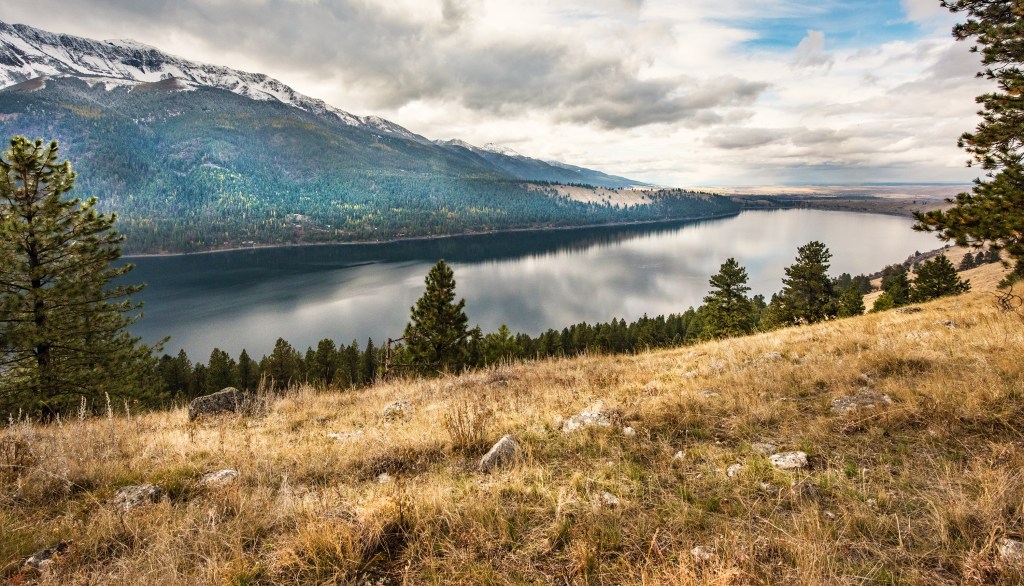Saving a treasured heritage
Published 12:00 am Friday, December 27, 2019

- The 1,800 acres of the Yanke property includes the more timbered portions of the East Moraine, as well as grassland.
Wallowa Lake curves gently from the imposing cragginess of Mt. Bonneville to the rolling grasslands of the Wallowa Valley. Cushioning the transition from mountains to prairies are the high, steep, and undeveloped slopes of the Wallowa Lake moraines.
Thanks to the dedicated efforts of Wallowa County residents and non-profits, a big part of this iconic landscape of the past will be preserved forever into the future.
Some 19,000 years ago the moraines were simply piles of barren gravel deposited by the groaning, moving glacier that towered perhaps 100 feet above them.
Today the moraines are grassy and forested ridges that define the edge of Wallowa Lake.
They are among the best-preserved and most accessible Ice Age glacial moraines in the world: an invaluable treasure to those who live and visit here.
Visitors often assume that the moraines are public land, but the undeveloped ridges are entirely in private hands.
They have been managed for their resources since the first Nez Perce arrived, perhaps 16,000 years ago. European settlers grew hay, grazed livestock and harvested timber. Management for natural resources has continued to this day.
But by the 1970s, development and tourism grew increasingly important to Wallowa County’s economy. Across the West, landscapes with mountain and lake views sprouted houses like mushrooms.
Development proceeded on the terminal moraine, marking the outer most edge of the ancient glacier, close to the town of Joseph.
In 2003, a proposed development on 62 acres of terminal moraine land sparked wide public and tribal concern, and appeals to Oregon’s Land Use Board of Appeals (LUBA). Ultimately, with the help of the newly formed Wallowa Land Trust and the Nez Perce Tribe, the land was acquired by Oregon State Parks and Recreation. In 2009, the 62 acres became the Iwetemlaykin State Heritage site.
This threat and its resolution brought the question of what might happen to the remaining open land on the moraines into clear focus for the people of Wallowa County. In 2008, a meeting convened to discuss the Oregon State Park plan for Iwetemlaykin included a passionate discussion of the value of the entire moraine system, especially the East Moraine that rises steeply from the lake to the sky along the Wallowa Lake Highway.
“To me,” said Wallowa County Commissioner Susan Roberts, “that meeting was a coming-together of every part of the County, ranchers, loggers, and everyone, of how important the moraine is to us all.”
The past two years have brought Wallowa County’s dream of a working moraine landscape free of development, housing, roads and other trappings of civilization to the brink of reality. By mid-January, 2020, about 80 percent of the landscape of the iconic East Moraine will be conserved.
After long consideration and discussion with the Wallowa Land Trust, four major landowners have signed conservation easements. The documents add a prohibition against development to their deed, but allow farming, grazing, timber harvest and other resource management.
In late 2018, the Yanke family, which owns 1,800 acres of the East Moraine, agreed to sell their land to Wallowa County for $6 million. The Partnership for the East Moraine — Wallowa Land Trust, Wallowa Resources and the Nez Perce Tribe, in collaboration with Wallowa County — has raised the money for the purchase.
“We anticipate that we will be able to complete the purchase on or before the January 19, 2020 closing date,” said Kathleen Ackley, Executive Director of the Wallowa Land Trust. The partnership is aiming for an additional $500,000 or more beyond the purchase price to fund management of this large and diverse public property.
The plan, to be developed by Wallowa Resources, the Nez Perce Tribe, and Wallowa Land Trust, will include public trails, restoration, thinning, and other improvements, as well as grazing and timber harvest, and ensure that the East Moraine’s natural scenery stays that way.
“It’s an iconic and picturesque landscape, largely undeveloped,” said Wallowa County commissioner Todd Nash. “It has provided multiple uses for a long time. The moraines are a valuable resource for everyone in Wallowa County.”





